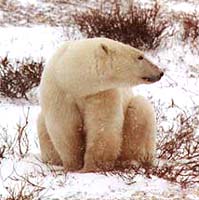
| Uncertain Times for Hudson Bay Polar Bear Population | 29 November 13 |

But scientists have observed over the course of almost 30 years, the Western Hudson Bay polar bear population has dropped over 30% from 1,200 bears in 1987 to roughly 850 bears at present. Especially concerning to biologists is that the rate of birth and survival of cubs is dropping. Additionally, the body condition of polar bears is steadily worsening, with skeletal-looking bears being seen more frequently, according to Ian Stirling, a wildlife biologist from the University of Alberta. In fact, the effects of this 'extended starvation' are manifesting themselves dramatically – female polar bears are on average 88 pounds lighter than they were in the 1980's. The worsening condition of this polar bear population can be traced to climate change caused early breakup of spring ice and later formation of fall ice. Over the past 30 years, the ice-free season has increased by roughly a day per year. The 2012 ice-free season was 143 days. Scientists predict that by 160 days of no ice each year, the polar bears may no longer be able to survive. View Novmember 27, 2013 The Guardian articleView November 22, 2013 National Geographic article View November 21, 2013 The Guardian article
Source: The Guardian
|
|
 Print version Print version |
Top |
